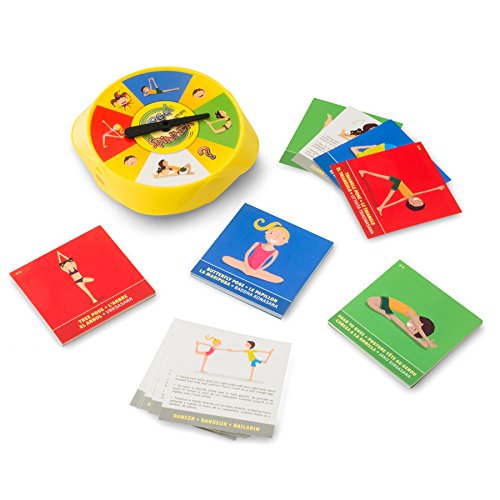Communicating with Children
Communicating with Children
Tips
All of the principles on this page apply to children as well, but here are some additional tips for communicating with this population.
- Be age appropriate
Find out your audience's typical reading level as well as the level of conceptual difficulty they can handle. Consider the appropriate image to text ratio. - Incorporate audience participation into any learning activity, even if you cannot directly interact with your audience.
- Address the whole child in your learning activities
Compartmentalizing is not a strong skill for most children; therefore consider any physical, emotional, social, and cognitive needs that may be present and incorporate them into your approach. - Use positive messages that focus on strengths.
Let children imagine what they can be, not what they shouldn't be. This includes using images that let children see themselves in positive ways.
(adapted from UNICEF's Communicating with Children)
Articles
-
Communication strategies for empowering and protecting children.Bell, J., & Condren, M. (2016). Communication Strategies for Empowering and Protecting Children. The journal of pediatric pharmacology and therapeutics : JPPT : the official journal of PPAG, 21(2), 176–184. https://doi-org.treadwell.idm.oclc.org/10.5863/1551-6776-21.2.176
-
Communicating with children and young people.Dryden, P., & Greenshields, S. (2020). Communicating with children and young people. British Journal of Nursing, 29(20), 1164–1166. https://doi.org/10.12968/bjon.2020.29.20.1164
-
Public Libraries as Supportive Environments for Children’s Development of Critical Health LiteracyCatherine L. Jenkins, Susie Sykes, & Jane Wills. (2022). Public Libraries as Supportive Environments for Children’s Development of Critical Health Literacy. International Journal of Environmental Research and Public Health, 19(11896), 11896. https://doi-org.treadwell.idm.oclc.org/10.3390/ijerph191911896
-
Paediatric patient perceptions of healthcare professional: Contributions to a communication curriculumThestrup, J., Sorensen, J. L., Esbjorn, B. H., Hybschmann, J., Frandsen, T. L., DeCosta, P., & Gjaerde, L. K. (2024). European Journal of Pediatrics, 184(1), article 75. https://doi.org/10.1007/s00431-024-05911-x
Nutrition for Children
Nutrition for Kids
-
Nutrition for ChildrenProvides a collection of links on food and nutrition for kids
-
Childhood Nutrition FactsThe CDC provides facts on nutrition for children and a link to their American Dietary Guidelines
-
Guidelines for School Health Programs to Promote Lifelong Healthy EatingThe CDC provides guidelines for schools to promote health and nutrition for students
-
Dietary Recommendations for ChildrenThe AHA provides dietary recommendations for healthy children such as eating patterns and portions by age and gender
-
Child NutritionThe USDA contains a variety of links relevant to child nutrition
Fun + Games
Yummy Fruits and Vegetables Game
At Bellack Library: PHY NUT YUMFRU
-
The Best Homemade Kids' Snacks on the Planet by
Call Number: PHY NUT BESTISBN: 9781592336616Publication Date: 2015-06-15 -
How to Teach Nutrition to Kids, 4th ed. by
Call Number: PHY NUT HOWTOISBN: 0964797003Publication Date: 2012-03-01 -
The Healthy Lunchbox by
Call Number: PHY NUT MEALPublication Date: 2005
Physical Activity for Children
Physical Activity for Children
Evidence
-
Accessing Physical Activity and Health Disparities among Underserved Hispanic Children: The Role of Actual and Perceived Motor Competence.Zhang, Tao, Joonyoung Lee, Tsz Lun Alan Chu, Changzhou Chen, and Xiangli Gu. 2020. “Accessing Physical Activity and Health Disparities among Underserved Hispanic Children: The Role of Actual and Perceived Motor Competence.” International Journal of Environmental Research and Public Health 17 (9). doi:10.3390/ijerph17093013.
-
Associations between objective measures of physical activity, sleep, and stress levels among preschool childrenDagny Y. Eythorsdottir, Peder Frederiksen, Sofus C. Larsen, Nanna J. Olsen, and Berit L. Heitmann. 2020. “Associations between Objective Measures of Physical Activity, Sleep and Stress Levels among Preschool Children.” BMC Pediatrics 20 (1): 1–7. doi:10.1186/s12887-020-02108-7.
-
Evaluation of Gross Motor Coordination and Physical Fitness in Children: Comparison between Soccer and Multisport ActivitiesPopović, B., Gušić, M., Radanović, D., Andrašić, S., Madić, D.M., Mačak, D., Stupar, D., Đukić, G., Grujičić, D., & Trajković, N. (2020). Evaluation of Gross Motor Coordination and Physical Fitness in Children: Comparison between Soccer and Multisport Activities. International Journal of Environmental Research and Public Health, 17(5902), 5902. https://doi.org/10.3390/ijerph17165902
-
Physical activity and brain structure, brain function, and cognition in children and youth: A systematic review of randomized controlled trialsGunnell, K. E., Poitras, V. J., LeBlanc, A., Schibli, K., Barbeau, K., Hedayati, N., Ponitfex, M. B., Goldfield, G. S., Dunlap, C., Lehan, E., & Tremblay, M. S. (2019). Physical activity and brain structure, brain function, and cognition in children and youth: A systematic review of randomized controlled trials. Mental Health and Physical Activity, 16, 105–127. https://doi.org/10.1016/j.mhpa.2018.11.002
-
Effects of a Strength-Dominated Exercise Program on Physical Fitness and Cognitive Performance in Preschool Children.Wick, K., Kriemler, S., & Granacher, U. (2021). Effects of a Strength-Dominated Exercise Program on Physical Fitness and Cognitive Performance in Preschool Children. Journal of Strength & Conditioning Research (Lippincott Williams & Wilkins), 35(4), 983–990. https://doi.org/10.1519/jsc.0000000000003942
Handouts
-
Energy Balance: Energy In and Energy OutUse this worksheet to better understand how balancing energy in and energy out can help your family maintain a healthy weight.
-
Families Finding the Balance: A Parent HandbookFrom the US Department of Health and Human Services. Offers practical tips to help parents help their families find the right balance of eating well and being physically active to maintain a healthy weight.
-
Parent Tips: Be Active and Have Fun!Try these tips from We Can!® to help increase daily physical activity and have fun at the same time.
-
Take Charge of Your Health: A Guide for TeenagersA booklet from the National Institute of Diabetes and Digestive and Kidney Diseases that is designed to help teenagers take small and simple steps to keep a healthy weight. It provides basic facts about nutrition and physical activity, and offers practical tools to use in everyday life, from reading food labels and selecting how much and what foods to eat, to replacing TV time with physical activities.
Activities
-
Indoor Physical Activity Ideas for FamiliesPhysically active games that can be played indoors from the University of Rochester Medical Center
-
Adapted Physical ActivitiesPhysical activities and games with suggestions on how to adapt for children with disabilities
Borrow from the Library
-
 The Fitness Station
Call Number: PHY FIT FITSTAFind this kit on the Bellack Library shelves.
The Fitness Station
Call Number: PHY FIT FITSTAFind this kit on the Bellack Library shelves. -
Taking care of yourself: Getting exercise by
Call Number: PHY FIT GETTPublication Date: 2012Find this book on the Bellack Library shelves. -
You are a lion! and other fun yoga poses by
Call Number: PHY FIT YOUISBN: 9780399256028Publication Date: 2012Find this book on the Bellack Library shelves. -
 Activity Cards for Promoting Physical Activity in the Classroom
Call Number: PHY FIT CLASSFind this kit on the Bellack Library shelves.
Activity Cards for Promoting Physical Activity in the Classroom
Call Number: PHY FIT CLASSFind this kit on the Bellack Library shelves. -
 Yoga Spinner Game
by
Call Number: PHY FIT SPINNERFind this game on the Bellack Library shelves.
Yoga Spinner Game
by
Call Number: PHY FIT SPINNERFind this game on the Bellack Library shelves.
Yoga and Mindfulness for Kids
Yoga and Mindfulness for Kids
-
Sitting Still Like a Frog by
Call Number: MEH MINDFUL FROGPublication Date: 2013 -
 Yoga Spinner Game
by
Call Number: PHY FIT SPINNER
Yoga Spinner Game
by
Call Number: PHY FIT SPINNER -
How to Raise a Mindful Eater by
Call Number: MEH MINDFUL EATERPublication Date: 2016 -
You are a lion! : and other fun yoga poses by
Call Number: PHY FIT YOUISBN: 9780399256028Publication Date: 2012 -
 I Can Handle It!
by
Call Number: MEH MINDFUL ICANPublication Date: 2017Find this book on the Bellack Library shelves.
I Can Handle It!
by
Call Number: MEH MINDFUL ICANPublication Date: 2017Find this book on the Bellack Library shelves. -
Mindful games activity cards: 55 fun ways to share mindfulness with kids and teens by
Call Number: MEH MINDFUL GAMESPublication Date: 2017Find this game on the Bellack Library shelves. -
The Mindful Games Deck by
Call Number: MEH MINDFUL KIDSPublication Date: 2017 -
100 Yoga Activities for Children by
Call Number: PHY FIT 100YOGAISBN: 9781510719590Publication Date: 2017-04-25Find this book on the Bellack Library shelves. -
Animal Asanas by
Call Number: PHY FIT ANIMAISBN: 3791372750Publication Date: 2017-04-25Find this book on the Bellack Library shelves.
Internet Safety for Children and Teens
Internet Safety for Children and Teens
General Information
-
Online Safety for Children and Teens
 Reviews the most common threats to internet safety and what parents can do to combat them.
Reviews the most common threats to internet safety and what parents can do to combat them.
-
A Parent's Guide to Online Safety by
Call Number: SAFE ONL APAREPublication Date: 2013Find this book on the Bellack Library shelves. -
Safe practices for life online: A guide for middle and high school by
Call Number: SAFE ONL SAFEPRPublication Date: 2012Find this book on the Bellack Library shelves.
Cyberbullying
-
Cyber Bullying: A prevention curriculum for grades 3-5 by
Call Number: VIO BUL CYBERISBN: 9781592857159Publication Date: 2009-01-28Find this book on the Bellack Library shelves. -
 Cyber Bullying: A prevention curriculum for grades 6-12
by
Call Number: VIO BUL CYBERISBN: 9781592855964Publication Date: 2008-09-08Find this book on the Bellack Library shelves.
Cyber Bullying: A prevention curriculum for grades 6-12
by
Call Number: VIO BUL CYBERISBN: 9781592855964Publication Date: 2008-09-08Find this book on the Bellack Library shelves.
Library Resources
-
The Good Teen by
Call Number: YOUTH CHAR GOOTEEISBN: 0307347575Publication Date: 2007-10-09Find this book on the Bellack Library shelves. -
Children of Color, 2nd ed. [print] by
Call Number: DIV MUL CHICOLISBN: 0787962686Publication Date: 2003-04-14Find this book on the Bellack Library shelves. -
Teaching stress management: Activities for children and young adults by
Call Number: MEH STR TEACHPublication Date: 2011Find this book on the Bellack Library shelves. -
What to do when you worry too much: A kid's guide to overcoming anxiety by
Call Number: MEH STR WHATISBN: 9781591473145Publication Date: 2005 -
The Struggle to Be Strong by
Call Number: YOUTH CHAR STRSTRISBN: 1575420791Publication Date: 2000-01-15Find this book on the Bellack Library shelves. -
A Kids' Guide to Hunger and Homelessness by
Call Number: COM YOIN KIDGUIISBN: 9781575422404Publication Date: 2007-03-15Find this book on the Bellack Library shelves.
Drugs and Substance Use
-
Teens under the Influence by
Call Number: AOD DRUGS TEENSISBN: 034545734XPublication Date: 2003-08-26Find this book on the Bellack Library shelves. -
How to Talk to Your Kids about Drugs by
Call Number: AOD DRUGS HOWISBN: 9780736920100Publication Date: 2007-03-01Find this book on the Bellack Library shelves. -
I've Got This Friend Who by
Call Number: YOUTH CHAR IVEGOTISBN: 9781592854585Publication Date: 2007-01-01Find this book on the Bellack Library shelves. -
Reducing Underage Drinking by
Call Number: AOD ALC REDUCISBN: 0309089352Publication Date: 2004-03-26Find this book on the Bellack Library shelves.
